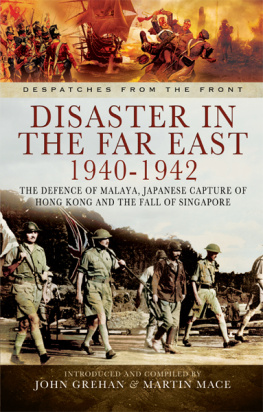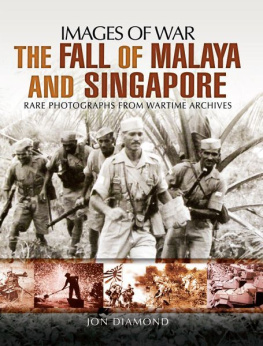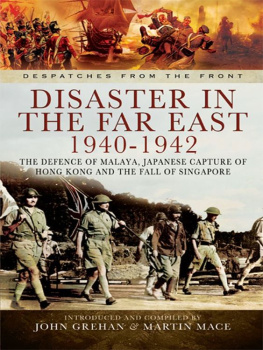Stille - Malaya and Singapore 1941-42: the fall of Britains empire in the East
Here you can read online Stille - Malaya and Singapore 1941-42: the fall of Britains empire in the East full text of the book (entire story) in english for free. Download pdf and epub, get meaning, cover and reviews about this ebook. City: Asien;Oxford;Singapore, year: 2016, publisher: Bloomsbury Publishing;Osprey, genre: Non-fiction. Description of the work, (preface) as well as reviews are available. Best literature library LitArk.com created for fans of good reading and offers a wide selection of genres:
Romance novel
Science fiction
Adventure
Detective
Science
History
Home and family
Prose
Art
Politics
Computer
Non-fiction
Religion
Business
Children
Humor
Choose a favorite category and find really read worthwhile books. Enjoy immersion in the world of imagination, feel the emotions of the characters or learn something new for yourself, make an fascinating discovery.
- Book:Malaya and Singapore 1941-42: the fall of Britains empire in the East
- Author:
- Publisher:Bloomsbury Publishing;Osprey
- Genre:
- Year:2016
- City:Asien;Oxford;Singapore
- Rating:5 / 5
- Favourites:Add to favourites
- Your mark:
- 100
- 1
- 2
- 3
- 4
- 5
Malaya and Singapore 1941-42: the fall of Britains empire in the East: summary, description and annotation
We offer to read an annotation, description, summary or preface (depends on what the author of the book "Malaya and Singapore 1941-42: the fall of Britains empire in the East" wrote himself). If you haven't found the necessary information about the book — write in the comments, we will try to find it.
Stille: author's other books
Who wrote Malaya and Singapore 1941-42: the fall of Britains empire in the East? Find out the surname, the name of the author of the book and a list of all author's works by series.
Malaya and Singapore 1941-42: the fall of Britains empire in the East — read online for free the complete book (whole text) full work
Below is the text of the book, divided by pages. System saving the place of the last page read, allows you to conveniently read the book "Malaya and Singapore 1941-42: the fall of Britains empire in the East" online for free, without having to search again every time where you left off. Put a bookmark, and you can go to the page where you finished reading at any time.
Font size:
Interval:
Bookmark:

First published in Great Britain in 2016 by Osprey Publishing,
PO Box 883, Oxford, OX1 9PL, UK
1385 Broadway, 5th Floor, New York, NY 10018, USA
E-mail:
This electronic edition published in 2016 by Bloomsbury Publishing Plc
Bloomsbury is a registered trademark of Bloomsbury Publishing Plc
2016 Osprey Publishing Ltd
OSPREY PUBLISHING IS PART OF BLOOMSBURY PUBLISHING PLC
All rights reserved
You may not copy, distribute, transmit, reproduce or otherwise make available this publication (or any part of it) in any form, or by any means (including without limitation electronic, digital, optical, mechanical, photocopying, printing, recording or otherwise), without the prior written permission of the publisher. Any person who does any unauthorised act in relation to this publication may be liable to criminal prosecution and civil claims for damages.
A CIP catalogue record for this book is available from the British Library.
ISBN: 978-1-4728-1122-6 (PB)
ISBN: 978-1-4728-1124-0 (eBook)
ISBN: 978-1-4728-1123-3 (ePDF)
Editorial by Ilios Publishing Ltd, Oxford, UK (www.iliospublishing.com)
Maps by Bounford.com
3D birds-eye views by The Black Spot
Battlescene illustrations by Peter Dennis
To find out more about our authors and books visit www.ospreypublishing.com. Here you will find our full range of publications, as well as exclusive online content, details of forthcoming events and the option to sign up for our newsletters. You can also sign up for Osprey membership, which entitles you to a discount on purchases made through the Osprey site and access to our extensive online image archive.
Author
Mark E. Stille (Commander, United States Navy, retired) received his BA in History from the University of Maryland and also holds an MA from the Naval War College. He has worked in the intelligence community for 35 years including tours on the faculty of the Naval War College, on the Joint Staff and on US Navy ships. He is currently a senior analyst working in the Washington DC area. He is the author of numerous Osprey titles, focusing on naval history in the Pacific.
Illustrator
Peter Dennis was born in 1950. Inspired by contemporary magazines such as Look and Learn he studied illustration at Liverpool Art College. Peter has since contributed to hundreds of books, predominantly on historical subjects, including many Osprey titles. A keen wargamer and modelmaker, he is based in Nottinghamshire, UK.
ARTISTS NOTE
Readers may care to note that the original paintings from which the colour plates in this book were prepared are available for private sale. The Publishers retain all reproduction copyright whatsoever. All enquiries should be addressed to:
Peter Dennis, Fieldhead, The Park, Mansfield, Notts, NG18 2AT, UK magieh@ntlworld.com
The Publishers regret that they can enter into no correspondence upon this matter.
THE WOODLAND TRUST
Osprey Publishing are supporting the Woodland Trust, the UKs leading woodland conservation charity, by funding the dedication of trees.



INTRODUCTION
THE RISE OF SINGAPORE
Coming out of World War I, the British Government marked Japan as a future potential threat to the British Empire and its interests in the Far East. Since the size of the Royal Navy was much reduced after the war, it was not large enough to commit powerful forces to the Far East on a permanent basis. This led to the strategy that called for the British to send a powerful fleet to the Far East in times of crisis. To execute this strategy, a large naval base would have to be available.
The Admiralty considered several possibilities for such a base. Among the choices were Hong Kong, Australia and Singapore. Hong Kong was ruled out because it was too close to Japan and could not be properly defended; Australia, particularly Sydney, was ideal from several perspectives, but was simply too far from the interests that it was supposed to be protecting. The only remaining option was Singapore. It was ideally located at the strategic chokepoint from the South China Sea into the Indian Ocean and was far enough from the nearest Japanese bases to offer it strategic depth from attack. Most of all, it was immediately accessible to the areas needing defence.
The British government announced its decision to build a new naval base at Singapore in 1921. The Washington Naval Treaty of 1922 and its associated agreements increased the importance of Singapore since the construction of additional naval bases was prohibited. The treaty reduced the size of the Royal Navy and made it unlikely that it would be big enough to meet requirements in both Europe and the Far East. Part of the 1922 agreements was a treaty to restrict the construction of fortifications near Japan. However, this excluded Singapore, which now became the most visible symbol of British might in the Far East.
THE BRITISH DEFENCE DILEMMA
The rise of Japanese militarism resulted in the seizure and annexation of Manchuria by Japan in 193132. In 1934, Japan renounced the Washington agreements. This was followed by the invasion of China in July 1937. Concurrent with Japanese expansion in China, tensions in Europe dramatically rose. In 1938, Germany pressured Czechoslovakia for territorial concessions in the Sudetenland. The British policy of appeasement meant war was averted, but it was soon apparent that continued German demands would lead to war. Great Britain began to re-arm.
Work continued on the Singapore naval base. It was officially opened in February 1938, though not actually completed. As war loomed in Europe, the British plan to deploy a large fleet to Singapore during a crisis began to look even more hollow. In July 1939, the period required to deploy a large force to Singapore was extended to 90 days from the 70 days set in March 1938. Until the arrival of the fleet, Singapore would have to hold out with whatever means were available.
When war did come in September 1939, only Germany entered the conflict. Italy and Japan remained on the sidelines, but still had to be watched. The period for getting a fleet to the Far East was extended to 180 days. The British situation worsened when France fell to the Germans in June 1940, which prompted the entry of Italy into the war that same month. The British had already decided that the Mediterranean would have priority over the Far East and, of course, both were secondary to the security of Great Britain itself, which was under the threat of invasion. The worsening situation forced the British to suspend their plan to send a large fleet to the Far East in a crisis.
When war came between Great Britain and Japan it would be centred on Singapore and Malaya. This was the strategic centre of gravity for the British in the Far East. The two areas held not just the naval base and a number of airbases, but were strategically positioned to dominate Southeast Asia. Although the British were stretched to the limit by the war, they still believed that Singapore could be defended. Even though it was third in priority for allocation of forces, behind the defence of Great Britain and the Mediterranean, much had been done to bolster the fortress defences. According to British calculations, it was unlikely that the Japanese Army, still tied down by the conflict in China, would be bold enough and have the logistical capabilities to attempt to launch an attack on the heart of British power in the Far East. Therefore, depending on the state of the conflict in northern Europe and the Mediterranean, the British would still have adequate time to reinforce the fortress. However, no British plan foresaw the direction the war would take in 194041. The British had suffered defeat after defeat, and were being pressed to maintain the security of the sea lanes in the Atlantic, defend the home islands from attack, and protect their key position in Egypt. This undermined any real hope of providing significant reinforcement to the Far East when the Japanese attacked.
Next pageFont size:
Interval:
Bookmark:
Similar books «Malaya and Singapore 1941-42: the fall of Britains empire in the East»
Look at similar books to Malaya and Singapore 1941-42: the fall of Britains empire in the East. We have selected literature similar in name and meaning in the hope of providing readers with more options to find new, interesting, not yet read works.
Discussion, reviews of the book Malaya and Singapore 1941-42: the fall of Britains empire in the East and just readers' own opinions. Leave your comments, write what you think about the work, its meaning or the main characters. Specify what exactly you liked and what you didn't like, and why you think so.

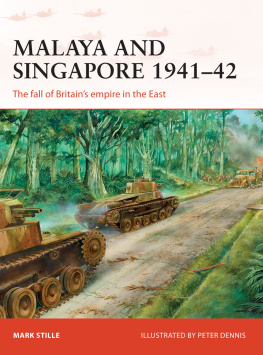
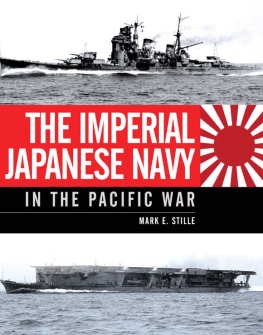
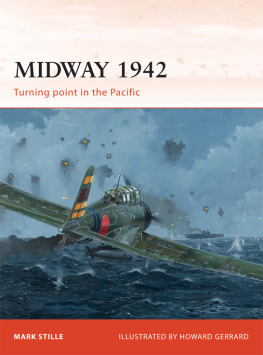
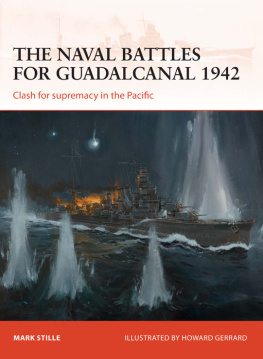

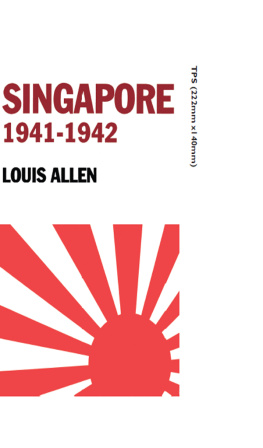
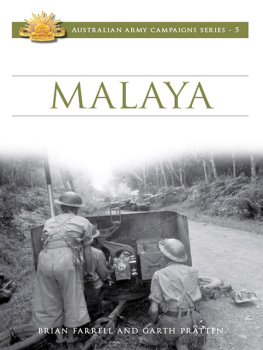
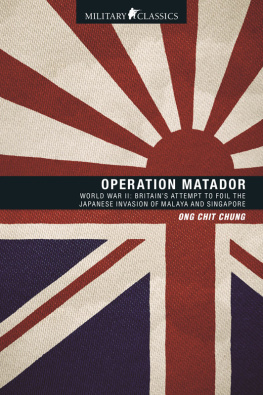


![Haselden Mark - Buffaloes over Singapore: [RAF, RAAF, RNZAF and Dutch Brewster fighters in action over Malaya and the East Indies 1941-42]](/uploads/posts/book/212345/thumbs/haselden-mark-buffaloes-over-singapore-raf.jpg)


